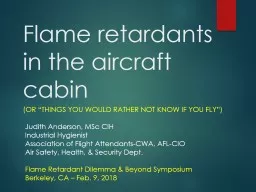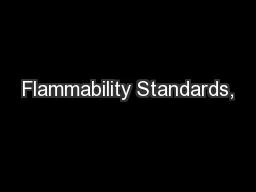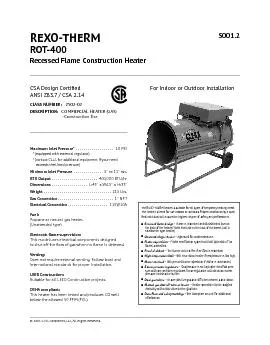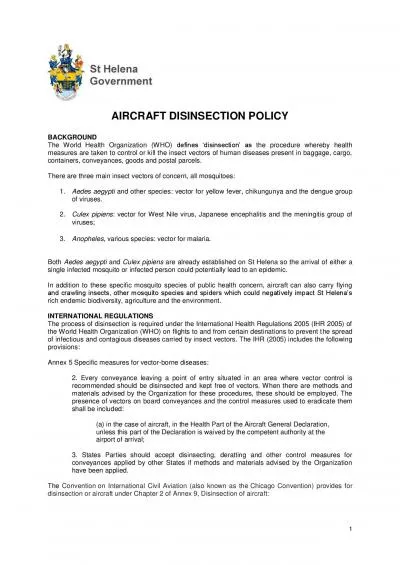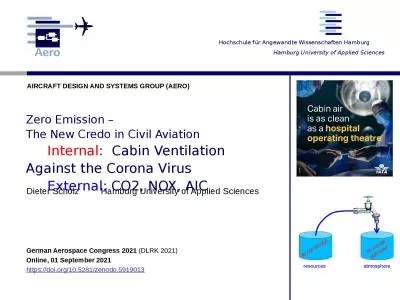PPT-Flame retardants in the aircraft cabin
Author : ellena-manuel | Published Date : 2019-11-21
Flame retardants in the aircraft cabin Or Things you would RATHER NOT KNOW IF YOU FLY Judith Anderson MSc CIH Industrial Hygienist Association of Flight AttendantsCWA
Presentation Embed Code
Download Presentation
Download Presentation The PPT/PDF document "Flame retardants in the aircraft cabin" is the property of its rightful owner. Permission is granted to download and print the materials on this website for personal, non-commercial use only, and to display it on your personal computer provided you do not modify the materials and that you retain all copyright notices contained in the materials. By downloading content from our website, you accept the terms of this agreement.
Flame retardants in the aircraft cabin: Transcript
Download Rules Of Document
"Flame retardants in the aircraft cabin"The content belongs to its owner. You may download and print it for personal use, without modification, and keep all copyright notices. By downloading, you agree to these terms.
Related Documents

